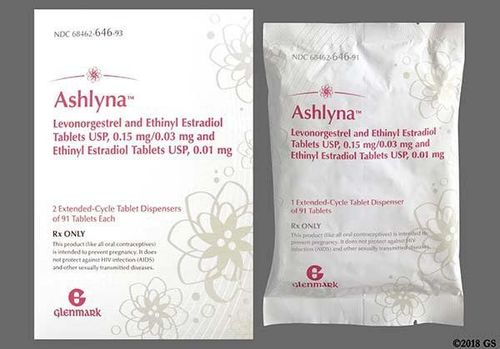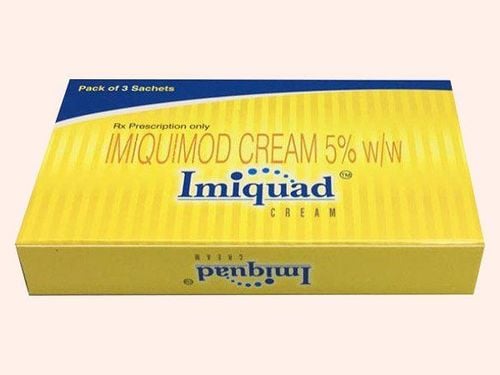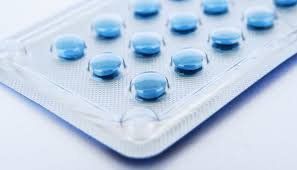This is an automatically translated article.
Condoms help prevent pregnancy and sexually transmitted diseases (STDs), and they create a barrier that keeps semen and other body fluids out of the vagina, rectum, or mouth.1. Female condom
Currently, on the market, there are not only male condoms, but also a type specifically for women to increase safety for couples when having sex. Female condoms have a completely different use than male condoms, but their uses are the same, helping you prevent pregnancy and prevent sexually transmitted diseases. education effectively.
2. Male condoms and popular condoms
Male condoms are usually a thin plastic sheath that fits around the size of the penis during sex. Currently on the market there are many different types of condoms for you to easily choose according to your preferences:
Latex condoms: made from latex. Most people use latex condoms, but some people are allergic to it. If you are sensitive or have an allergic reaction to latex, you can use rubbers made from polyurethane or polyisoprene.
Plastic condoms: Helps protect you from STDs, such as HIV, herpes, chlamydia and gonorrhea, during any type of vaginal, oral, and anal sex.
Sheepskin condom: this is the oldest material condom on the market - produced from sheep intestines. Although they have the ability to prevent pregnancy, sheep intestines are quite porous and have small pores similar to human skin. This makes the protection and prevention of sexually transmitted diseases not highly effective.
Lubricating condoms: Lubricants are a thin layer of liquid on top of condoms. It can prevent pain and increase orgasm during sex. In addition, it also helps to keep the condom from breaking or tearing during sex. If your condom is not already coated with lubricant, you can add a little more lubricant to make sex more comfortable. You should use water- or silicone-based lubricants, and oil-based products should be avoided as it can damage or reduce the effectiveness of condoms.

Bao cao su có chất bôi trơn
Ribbed and spiked condom: aims to increase pleasure for you and your partner.
Luminous condom: this is one of the latest inventions in the "world" of condoms. This type of condom has the ability to glow in the dark, helping to increase pleasure and excitement when having sex. However, this type of condom has not yet been approved by the FDA and has not been proven to be effective at preventing pregnancy or STDs.
3. Using condoms is really effective as expected?
How well a condom works depends a lot on whether you use it correctly. A woman can get pregnant even if her partner uses it. According to Webmd statistics, in a year, 2 in 100 women whose partners always use condoms incorrectly will get pregnant, and that number continues to increase to 18 in 100.
Condoms also significantly reduce the risk of STD transmission from one person to another. The risk of getting the disease also depends on the type of disease. For example, condoms will be almost 100% effective at protecting against HIV, but for HPV, the most common sexually transmitted disease, can infect areas where condoms are not available. su cannot cover, such as the scrotum. In this case, condoms can only reduce the risk of HPV infection but cannot eliminate them completely.
4. Note when using condoms
To optimally prevent unwanted pregnancy and help prevent STDs effectively, you need to use condoms correctly. Here are some things to keep in mind when putting on a condom before having sex:Make sure you don't tear the condom when you open the package Never use it when it's brittle, hard, sticky, or expired.

Lưu ý khi sử dụng bao cao su
Squeeze the tip of the condom to let the air out, then place the condom on the tip of the penis when the penis is erect before it comes into contact with any part of your partner One hand holds the condom firmly. condom, with the other hand roll the condom down to the lower part of the penis. Use a new condom after each intercourse. If you are not circumcised, pull the foreskin back before you put it on. Some condoms have a tip that forms a cavity, creating an empty space for sperm after ejaculation. You should leave about half an inch at the top where semen can gather. This prevents the condom from tearing. If you feel it break or tear during sex, stop immediately, pull out, and put on a new condom. After ejaculation and before the penis loses its erection, carefully pull out, making sure the condom doesn't tear. When you remove it, make sure that semen doesn't spill out.
Please dial HOTLINE for more information or register for an appointment HERE. Download MyVinmec app to make appointments faster and to manage your bookings easily.
Reference source: Webmd.com












